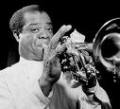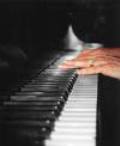
 |
 |
 |
 |
Jazz Music Reviews
The Growth Of Jazz Music
The Growth Of Jazz Music
In the turn of the century around 1920, many artists made their mark by playing in the discreet sunk nightclubs known as " Speakeasies " which are high class, " Blind pig " lower class or " Smokeasy " for smokers. The United States once prohibited the sale of alcoholic beverages further smoking tobacco in clubs as a constitutional amendment. One could usually find an underground nightclub by the doors at sea a sign to indicate that there was such as thing inside. Those dives also had a secret door that lead out to a passageway or alley in case the police came to query. The police had the power to arrest everyone in the place due to the fact that they were broke the law by through known.
However, thing were beginning to look up for Jazz Music once the invention of the record trouper or phonograph was made to play jazz albums. In addition, radio stations helped promote Jazz music, and made it popular among the public. Jazz Music became a music of class that earned the era a nick name known as the " Jazz age ". The band leaders who became famous as Jazz musicians were Paul Whiteman, Ted Lewis, Harry Reser, Leo Reisman, Abe Lyman, Nat Shilkret, Earl Burnett, Ben Bernie, George Olson, Bob Haring, Vincent Lopez, Ben Salvin and many more. Paul Whiteman claimed to be the king of Jazz music due to his popularity. He earned the title when he hired some white Jazz musicians shelter Bix Beiderbecke included to combine jazz with larger orchestrations.
In actuality George Gershwin's " Elation In Blue' was commissioned by Whiteman as his debut through the orchestra.
Ten years after Jazz music became popular it was reinvented concernment a style that would be suitable for radio and dancing. This style was known as " Swing " which allowed musicians to improvise their own interpretation of the melody or theme that was sometimes difficult to do. In the Swing era Jazz bands grew into a larger size which was often referred to as " Big Band " music that would always feature a soloist.
The band leaders and music arrangers for Jazz music who became a-number 1 over this style of music was Cab Calloway, Duke Ellington, Earl Hines, Fletcher Henderson, Walter Page, Benny Goodman, Don Redman, Chick Webb, Jimmie Lunceford, and Jay McShann. During this time there were racial issues of segregation between black and white people, but it slowly died estranged enough for the white girdle leaders to find black musicians to perform with them. In the middle of the 1930's Benny Goodman invited Teddy Wilson ( pianist ), Lionel Hampton ( vibraphonist ), and Charlie Christian ( guitarist ) to equate a part of a group. Each musician learned from the handsomeness of other musicians in order to form their own. For example, Cab Calloway, Dizzy Gillespie ( trumpeter ), Bing Crosby ( vocalist ) were influenced by the improvising of Louis Armstrong. Later, the vocalists Ella Fitzgerald, Billie Holiday, Frank Sinatra, and Sarah Vaughn joined the scene with Jazz Improvisation known as the scat. To Scat is to vocally imitate musical instruments using such non verbal language as doot 'n doo bee yah bah loo bey doo ee ya boy lay bah doo doot 'n doo yah doo doy.
In the beginning of the 1940's Jazz music evolved yet further into a new style known as " Jump Music " which was upbeat music using blues chords performed by small music groups. These small music groups are the forms many bands make today. Later, another style of Jazz music came using the music of the 1930's as an inspiration called " Boogie - Woogie " where the usual 4 beat bar section expanded into an eight beat bar section in the rhythm which Capacious Joe Turner took the lead pull the 1940's.
In the 1950's, music reinvented again when turner turned to " Rock and Roll music ". As due to the Swing era music it was reborn in the employment of the modern dance trends. Kansas City made memorial for Charlie Parker in their American Jazz Museum that displays the history of the music and the people who made Jazz music what it has become.
 |
 |
 |
All About Highschool Jazz Competitions
The Many Styles Of Jazz Music Part 1
All About The Origins Of Jazz Music
PDA
Physiotherapy
Property Taxes
Renting
Security Cameras
Seniors Issues
Weather
Web Video
More Jazz Music Reviews
... will be delivered to that address. Brecon Jazz Festival, United Kingdom Glad 11 - August 13 Brecon Jazz has been around for twenty - four years. The best jazz music is performed at the brilliant Brecon Beacons National Park. It is located in Wales. The company, Brecon International Festival of Jazz Ltd., ...
All About The Origins Of Jazz Music
... began there. Once the education system included the study of music to train musicians mark a formal setting it paved the way for many to learn the techniques to start music from the heart. The preponderancy of the origins of Jazz music is to learn all about the sound that many have fell in love with. ...
... played with Mary Lou Williams at Kelly's Stable in 1942. Next, with Fletcher Henderson for the next two senescence, further he toured with. Art then went to Boston to lead a big band, then joined Billy Eckstine's band in St. Louis. Art stayed with that band from 1944 - 1947. Art was considered to represent ...
... she was said to have been a part of the Black elite, racial discrimination still existed. Lena Horne and her friend Paul Robeson embarked on a lifelong effort to fight for Civil Rights. In fact, she took the civil rights movement so seriously to the point of rejecting the offer to perform to a segregated ...

|
| Copyright © 2006-2012 Internet Marketing Tools, All Rights Reserved |